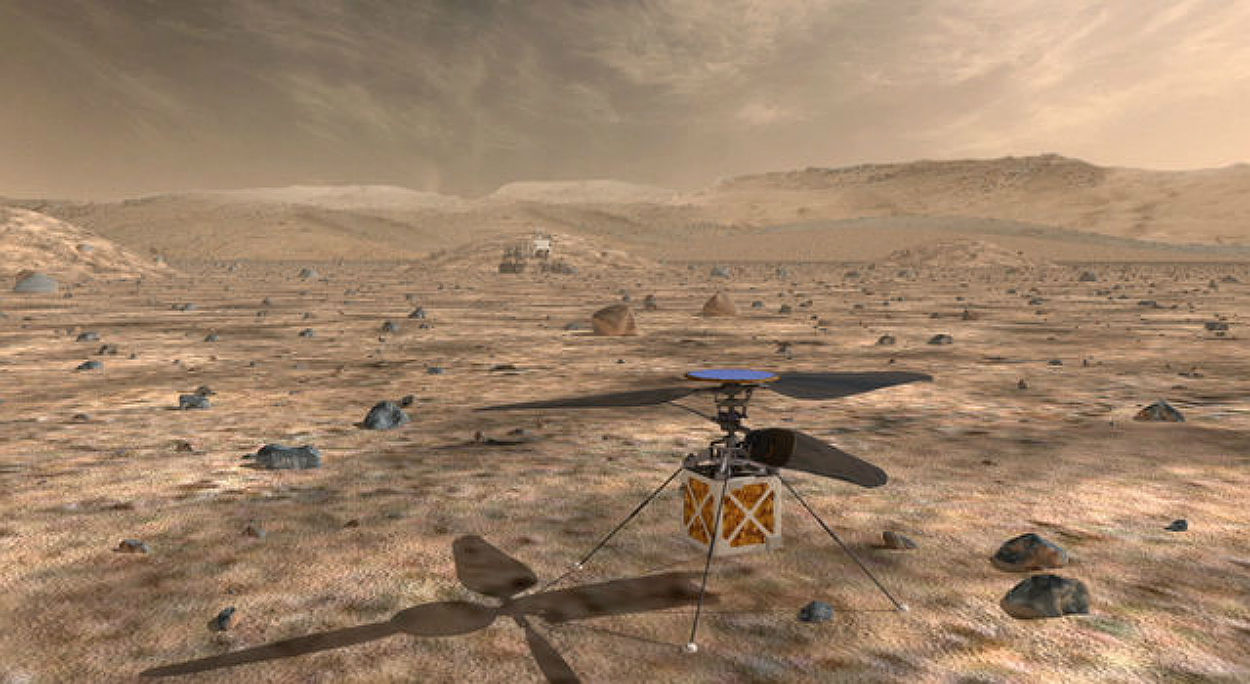NASA plans to include a small, autonomous rotorcraft as part of its Mars 2020 rover mission in order to demonstrate the viability and potential of heavier-than-air vehicles on the Red Planet.
NASA plans to include the Mars Helicopter, a small, autonomous rotorcraft, as part of its Mars 2020 rover mission, currently scheduled to launch in July 2020. The agency aims to demonstrate the viability and potential of heavier-than-air vehicles on the Red Planet.
Launched in August 2013 as a technology development project at NASA’s Jet Propulsion Laboratory (JPL), the Mars Helicopter weighs in 1.8kg. Its twin, counter-rotating blades will rotate at almost 3,000 rpm – about 10 times the rate of a helicopter on Earth, to compensate for the thin Martian atmosphere.
The helicopter also contains solar cells to charge its lithium-ion batteries, and a heating mechanism to keep it warm through the cold Martian nights.
The vehicle will have an autonomous capbility to receive and interpret commands from the ground and then fly the mission on its own.
The full 30-day flight test campaign will include up to five flights of incrementally farther flight distances, up to a few hundred meters, and longer durations as long as 90 seconds, over a period. On its first flight, the helicopter will make a short vertical climb to 10ft (3m), where it will hover for about 30 seconds.
NASA says the Mars Helicopter is considered a high-risk, high-reward project. If it does not work, the Mars 2020 mission will not be impacted. If it does work, helicopters may have a real future as low-flying scouts and aerial vehicles to access locations not reachable by ground travel.
Mars 2020 will launch on a United Launch Alliance (ULA) Atlas V rocket from Space Launch Complex 41 at Cape Canaveral Air Force Station in Florida, and is expected to reach Mars in February 2021.
The rover will conduct geological assessments of its landing site on Mars, determine the habitability of the environment, search for signs of ancient Martian life, and assess natural resources and hazards for future human explorers. Scientists will use the instruments aboard the rover to identify and collect samples of rock and soil, encase them in sealed tubes, and leave them on the planet’s surface for potential return to Earth on a future Mars mission.

